
He was a legendary figure in the book collecting world of the Qing Dynasty. He spared no expense to "extend the life" of ancient books. His unique "yellow binding" technique gave damaged ancient books a new lease of life. He also wrote the glorious chapter of "Suzhou collectors are the best in Jiangnan" together with the city of Suzhou - he was Huang Pilie.
2025 marks the 200th anniversary of Huang Pilie's death. The Paper learned that on September 19, the "Lusterful Grassland - Document Exhibition on the 200th Anniversary of Huang Pilie's Death" was on display at the Suzhou Library. The exhibition comprehensively showcased the extraordinary contributions of the Suzhou bibliophile group headed by Huang Pilie to Chinese culture from various aspects, including family background and life, book collection and engraving, inscriptions and binding, social circles and gatherings, and influence on later generations.
Twenty days before the exhibition, the original copies of the Song Dynasty edition of "Illustrated Records of Stories" collected by the National Library and the Yuan Dynasty edition of "New Edition of Yuefu: Yangchun Baixue" collected by the Nanjing Library were exhibited at the same time. These two precious ancient books were collected by many famous people and were reassembled and inscribed by Huang Pilie himself. They can be called the treasures of the exhibition.
Rare books: Huang Pilie's collection of Song and Yuan Dynasty books on display in Suzhou
Entering the Suzhou Library exhibition hall, the air is filled with the unique literary charm and profound mystery of ancient books. In front of the central display case, many visitors pause to gaze at a treasured treasure from the National Library of China: Huang Pilie's Song-dynasty edition of "Tuhua Jianwenzhi." This Song-dynasty edition, open to its sixth volume, tells a fascinating story about the art world a thousand years ago.

The sixth volume of the Song-dynasty "Pictures and Records" from the collection of Huang Pilie was unrolled on site.
"At the beginning of the Republic of China, there was a Taoist named Lu Xizhen. Every time he painted a branch of flowers and hung it on the wall, bees would immediately flock to him." Lines of ancient, vigorous Song Dynasty calligraphy record the remarkable story of Lu Xizhen, a Taoist of the Northern Song Dynasty, whose lifelike paintings were so lifelike that they attracted bees. However, the author, Guo Ruoxu, then questioned: "Had the likes of Bian, Huang, Xu, and Zhao taken up the art form, there would have been no evidence of bees flocking. Isn't this a vain pursuit of fame and a corrupted art?" This demonstrates the aesthetic principle in ancient Chinese art criticism that prioritized "spiritual charm" over "resemblance."

"'Tuhua Jianwenzhi' is a significant work on the history of painting written by Guo Ruoxu of the Northern Song Dynasty. The sixth volume, which is being unpacked, is a particularly distinctive one, with a focus on anecdotes about painting, stories from the art world, and the philosophy of painting," Shen Li, Deputy Director of the Ancient Books Department of Suzhou Library, told The Paper. It's worth noting that the first three volumes of the book were a Yuan Dynasty manuscript treasured by Huang Pilie, while the last three Song Dynasty engraved volumes were a gift from Zhou Xizan. Due to the uneven lengths, Huang Pilie spared no expense in re-binding them, spending four or five thousand coins. "At the time, an average craftsman's monthly salary was about one or two ounces of silver. Four or five thousand coins equaled four or five ounces of silver, equivalent to four or five months' wages for a craftsman," Shen Li added.
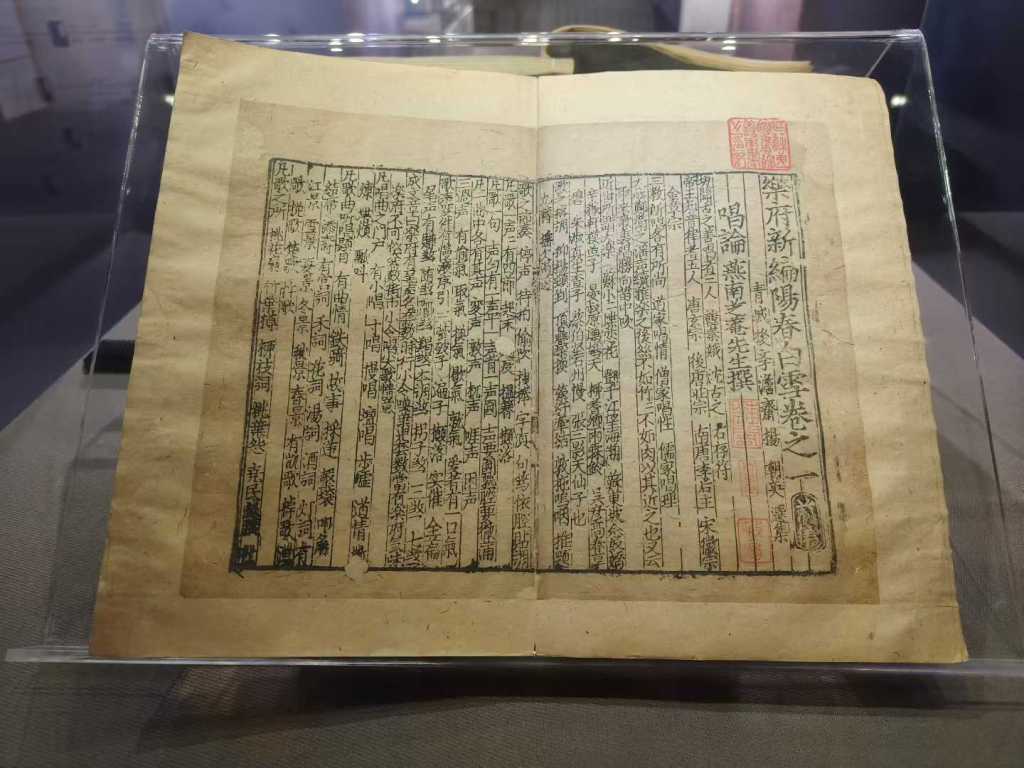
The exhibition on site is the Yuan Dynasty edition of "Yuefu Xinbian Yangchun Baixue" from the Nanjing Library.
Along with the "Illustrated Records of Observations and Memories," the Nanjing Library also exhibits a Yuan-era edition of "Yangchun Baixue, a New Edition of Yuefu." This work, once part of Qian Qianyi's Jiangyun Tower collection, bears the seals of Qian Qianyi and Liu Rushi. It later passed through the collections of Qian Zeng and He Yuanxi before ultimately coming to Huang Pilie. Huang Pilie's inked proofs within the scroll were confirmed to be in Liu Rushi's handwriting. The two volumes contain only fifty-one leaves. Huang Pilie noted in his postscript that "the exchange price was also fifty-one." He then ordered the work to be rebound in the butterfly binding style. It is now one of Nanjing Library's ten most valuable ancient books.
Book Collector: Huang Pilie's Academic Spirit and Bookbinding Art
Huang Pilie (1763-1825), courtesy name Shaowu, pseudonyms Caopu, and also known as Fuweng, was a native of Wuxian County (present-day Suzhou, Jiangsu Province) during the Qing Dynasty. He dedicated his life to the collection and study of ancient books, particularly excelling in the identification and collation of rare Song and Yuan dynasty editions. He established libraries such as "Bai Song Yi Xian," housing a vast collection of precious ancient books. He was a master of both collecting and appraising, appraising and reading, reading and proofreading, proofreading and publishing, and ultimately publishing with excellence, making outstanding contributions to book collecting, engraving, and proofreading.
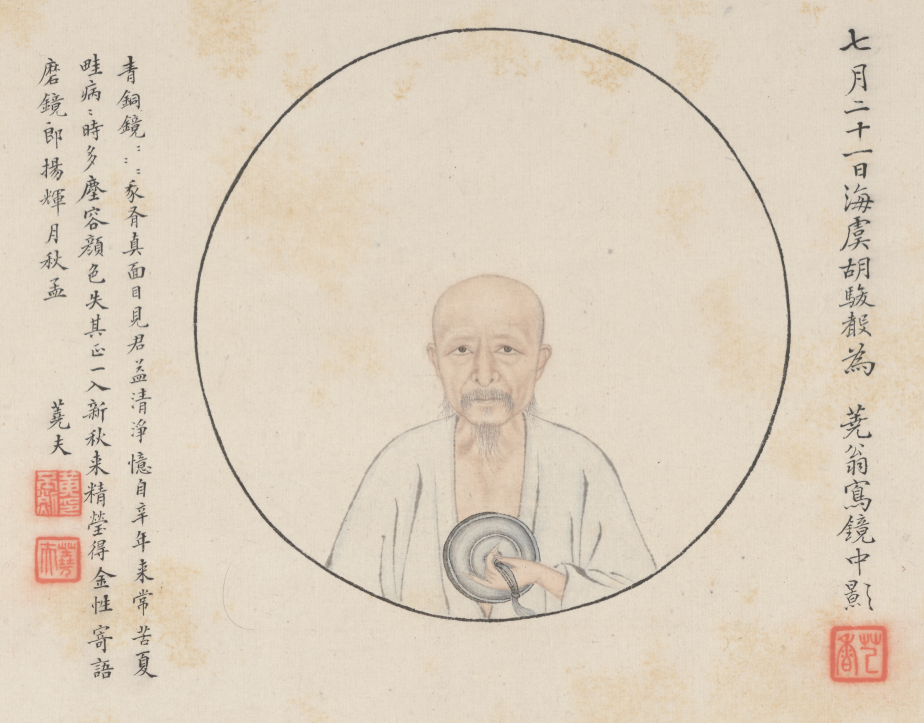
Small statue of Huang Pilie
Huang Pilie diligently tinkered with ancient texts, strictly adhering to the established methods of his predecessors, examining only differences and not determining correctness, in order to preserve the original texts. He frequently cross-checked multiple versions, often doing so several times, resulting in the highest quality of his collated editions. Besides providing precise verification of the textual editions, his colophon often recounts historical events and observations, making them a veritable treasure trove of anecdotes and the precursor of modern book discussion. Huang's colophon has become a highly sought-after work among book collectors and enjoys a high reputation. Over a thousand of his colophon remain, representing a valuable source of philological reference.
In the binding of ancient books, Huang Pilie adhered to the early Qing dynasty Qian Zeng tradition of "elegant and antique decoration." He employed renowned decorators such as Qian Ruizheng for a long time, guiding the craftsmen in their practice with the principle of "making it look new to the touch" and preserving its original appearance. He meticulously selected paper and spared no expense, boldly employing techniques such as mounting, interlining, and reworking, resulting in a unique style known as "Huang Binding." As Deputy Director Shen Li put it, "Huang Pilie spared no expense in restoring and decorating books, often spending several times the original price on a single repair."
Social Networks: The Cultural Contributions of Suzhou Book Collectors During the Qianlong and Jiaqing Periods
During the Jiaqing and Daoguang periods, Suzhou flourished in culture, and book collecting flourished. Huang Pilie cultivated a wide circle of friends through his love for books. He shared his knowledge and expertise with Gu Zhikui, Zhou Xizan, and Yuan Tingyao, becoming known as the "Four Friends of Book Collecting." He also maintained close ties with renowned bibliophiles and scholars such as Bao Tingbo, Wu Qian, Chen Yu, Zhang Jinwu, Qian Daxin, and Wang Qisun.
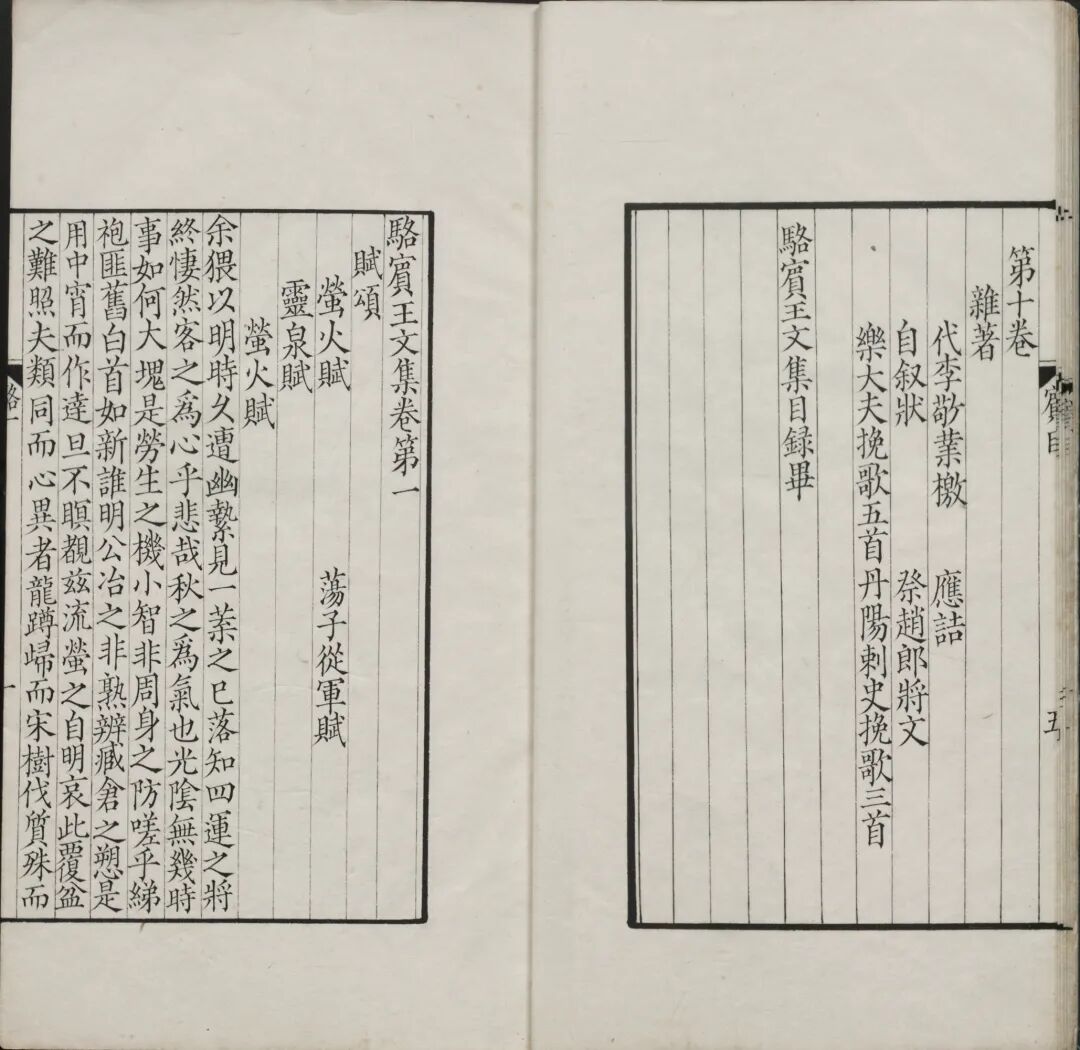
Luo Binwang's Collected Works, Ten Volumes (Tang Dynasty), Compiled by Luo Binwang, 12th year of the Jiaqing reign of the Qing Dynasty (1807), Huang Shiliju Copy of the Song Dynasty Edition, with postscript by Huang Pilie and Gu Guangqi, and postscript by Jin Xijue, in the collection of Nanjing Library.
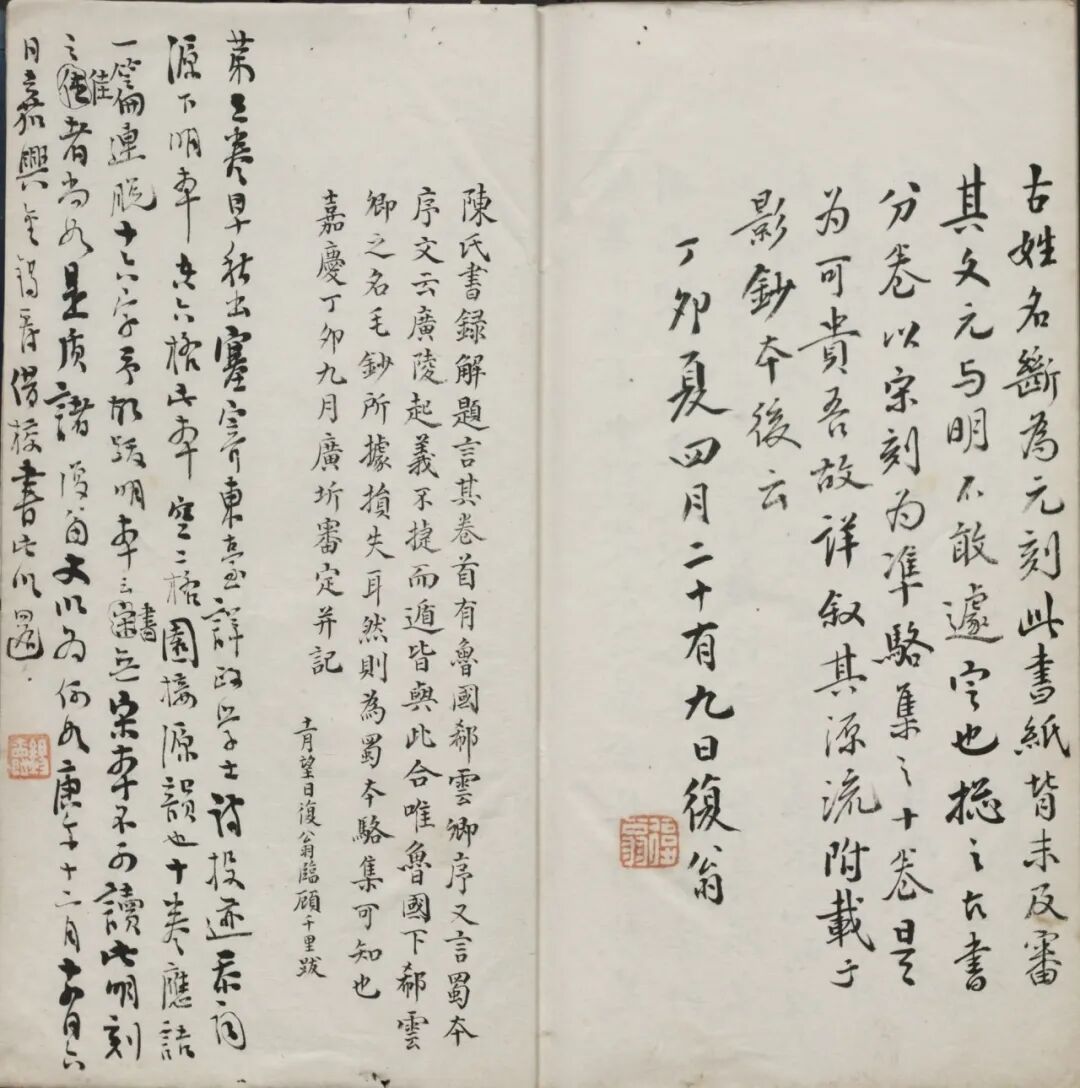
Luo Binwang's Collected Works, Ten Volumes (Tang Dynasty), Compiled by Luo Binwang, 12th year of the Jiaqing reign of the Qing Dynasty (1807), Huang Shiliju Copy of the Song Dynasty Edition, with postscript by Huang Pilie and Gu Guangqi, and postscript by Jin Xijue, in the collection of Nanjing Library.
Many of the rare books on display bear witness to the exchanges between these collectors. The Nanjing Library's "Collected Works of Luo Binwang, Ten Volumes" is a Song Dynasty copy of the work, dated the 12th year of the Jiaqing reign of the Qing Dynasty, made at the Shili Residence of the Huang family. It includes a postscript by Huang Pilie, along with those by Gu Guangqi and Jin Xijue. Gu Guangqi (1766-1835), the foremost Qing Dynasty proofreader, enjoyed a close friendship with Huang Pilie in his early years, spending many years proofreading books at Huang's residence. Later generations collectively referred to Huang Pilie's postscript and Gu Guangqi's annotations as "Huang postscript and Gu proofreading."
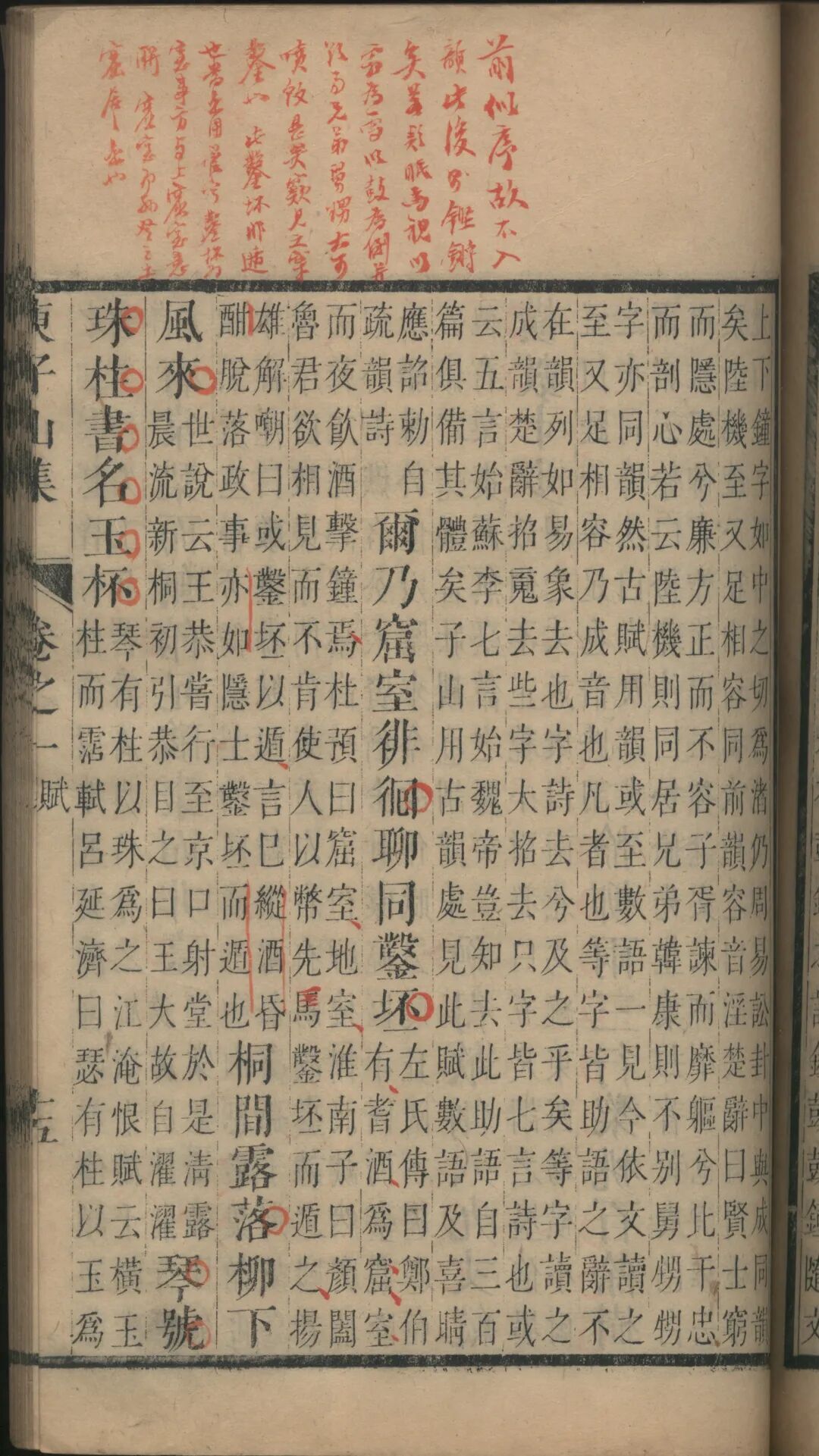
Yu Zishan's Collected Works, 16 volumes, Chronicle, 1 volume, General Commentary, 1 volume, (Northern Zhou), written by Yu Xin, annotated by Ni Fan (Qing Dynasty), Chongxiutang edition, 1687, annotated by Wu Qian, seals: Baijing/Lou Wu Family Collection, Lan/Xue Zhai, Wu Family Collection, Suzhou Library

Baoyou Revision of Qinchuan Chronicles (15 volumes), compiled by Sun Yingshi (Song Dynasty), supplemented by Bao Lian and Zhong Xiushi (Song Dynasty), supplemented by Lu Zhen (Yuan Dynasty), Qing Dynasty copy by Cao Yan, postscript by Huang Pilie, collection of Changshu Cultural Expo Center
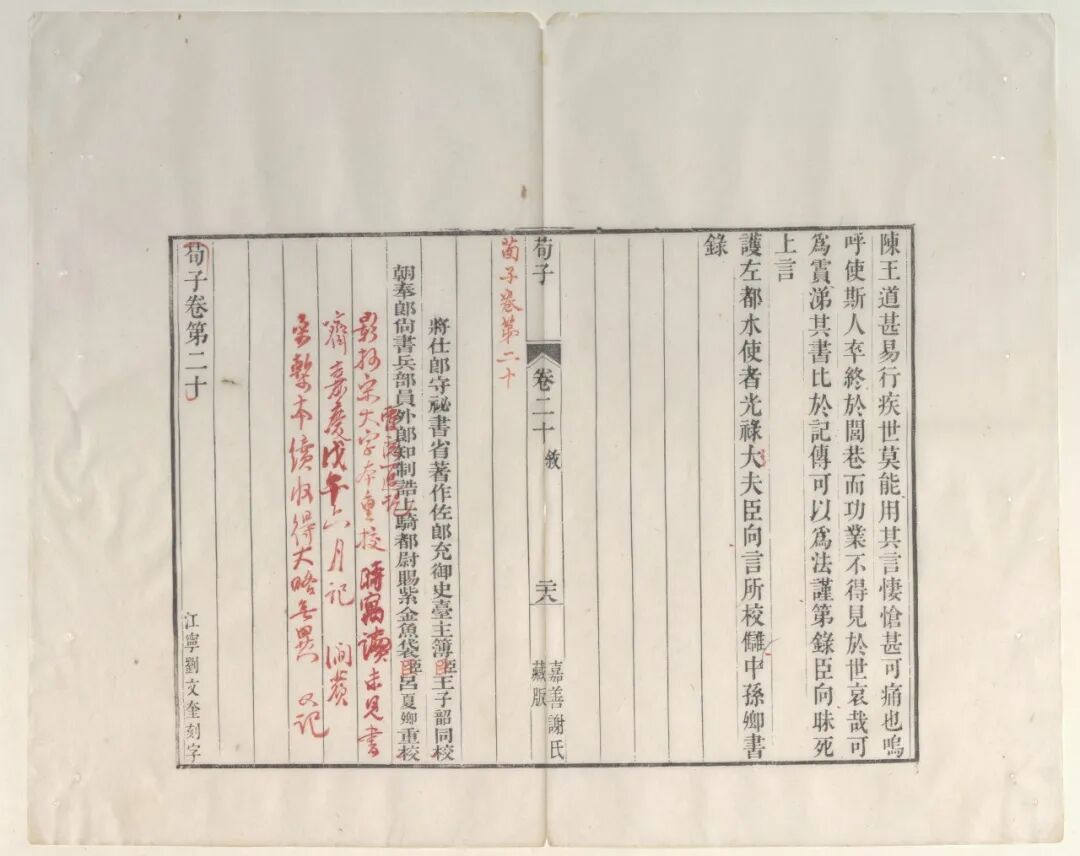
Xunzi, 20 Volumes (Tang Dynasty), Annotated by Yang Jing (Qing Dynasty), Edited and Supplemented by Xie Yong (Qing Dynasty), 1786, Xie's Anyatang Edition, Proofread and Postscript by Gu Guangqi, Collection of Wujiang District Library, Suzhou City
The Suzhou Library holds a copy of the Collected Works of Yu Zishan, with annotations by Wu Qian. Wu Qian (1733-1813) and Huang Pilie copied and supplemented numerous books, exchanging them for their respective needs, a feat that became a legend in the book world. Furthermore, the Changshu Cultural Expo Center holds the Baoyou Revised Qinchuan Chronicle, the only copy of Huang's annotated work currently extant in a public collection in Suzhou. Gu Guangqi's annotated and annotated Xunzi is held in the Suzhou Wujiang District Library. The Suzhou Library also holds Pan Yijun's manuscript of Sansongtang Bibliography, Chen Yu's formerly collected Zhengyang, and Shi Yunyu's "Five Drafts of Duxuelu," showcasing the fruitful achievements of the Suzhou book collecting community centered around Huang Pilie.
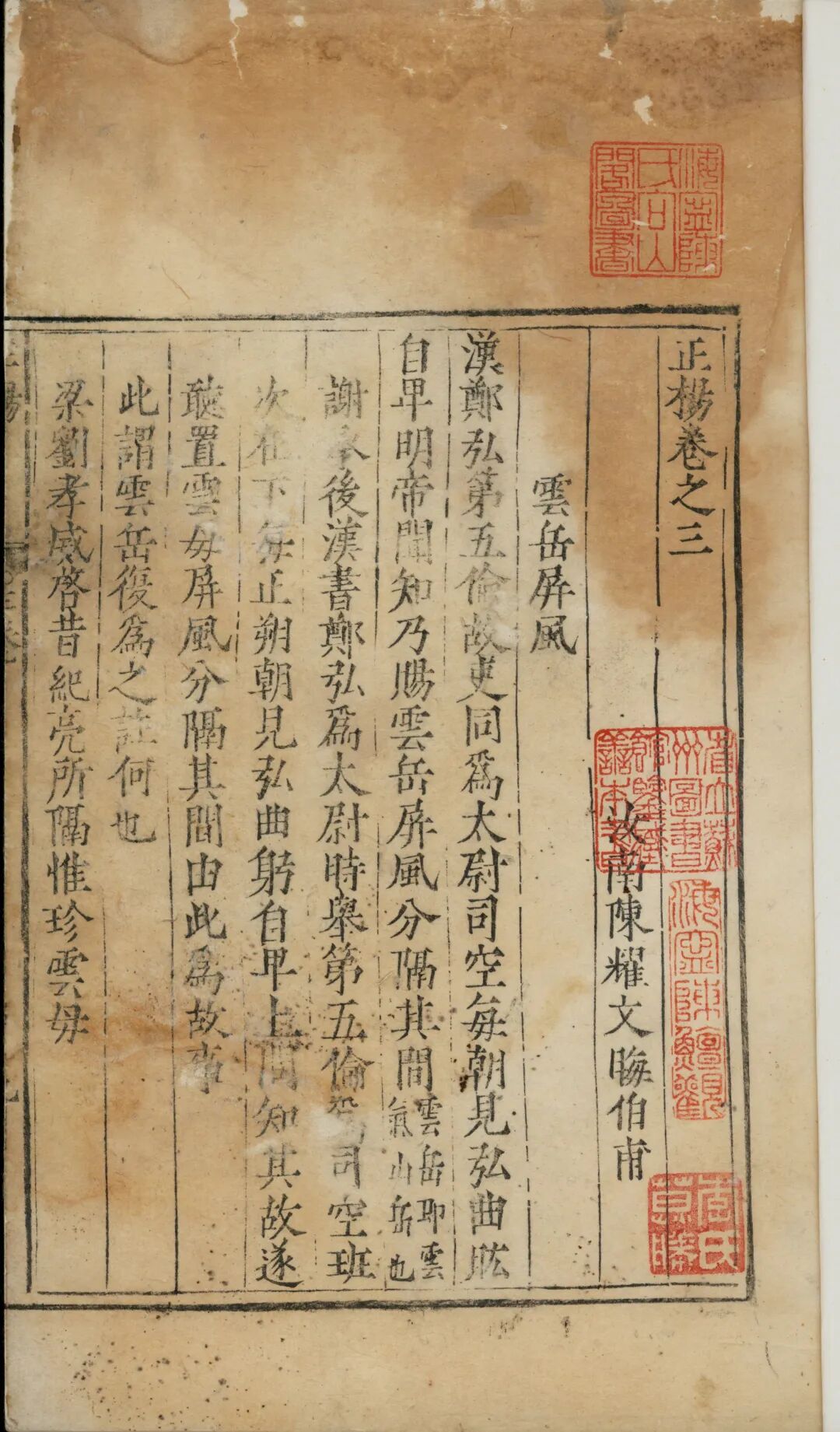
Zheng Yang (four volumes) by Chen Yaowen (Ming Dynasty), engraved in the third year of the Longqing reign of the Ming Dynasty (1569). Seals: Chen Yuguan of Haining, Chen Xiangshan Pavilion of Haining, Suzhou Library.
Huang Pilie's life was one spent surrounded by ancient books and dedicated to proofreading. He dedicated his life to building the pinnacle of ancient Chinese book collecting, and his scholarly spirit continues to shine in the field of ancient book preservation.
"I have proofread a book several times, and at the end of the year, I am bored and open the book again. Wind and rain are beating against the window as I sit alone, secretly shocked by the alternation of cold and heat." This poem, written by Huang Pilie in the postscript to Xixi Congyu, describes his feelings when he was proofreading a book alone at the end of the year with wind and rain beating against the window. It expresses his persistence and adherence to the inheritance of literature, and it still makes people feel nostalgic when reading it today.

Exhibition site
The exhibition is supervised by the National Library of China (National Ancient Books Preservation Center) and Nanjing Library (Jiangsu Ancient Books Preservation Center), hosted by the Suzhou Municipal Bureau of Culture, Radio, Film, Television, and Tourism, and organized by Suzhou Library (Suzhou Ancient Books Preservation Center). It is co-organized by Suzhou Museum, Changshu Cultural Expo Center, Wujiang District Library, and Universal Gravitation (Nanjing) Software Technology Co., Ltd. The exhibition will run until December 18th. During this period, Suzhou Library will also host lectures by renowned experts and related experiential activities to allow more visitors to understand and inherit Huang Pilie's spirit and academic achievements in ancient book preservation.